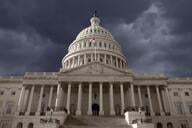You have /5 articles left.
Sign up for a free account or log in.
The American taxpayer has a huge stake in higher education accreditation. In order to access some of the $160 billion in federal student aid dollars, colleges and universities must be approved by a recognized regional or national accrediting body. In the absence of an alternative, the accreditation process has come to serve as the federal government’s primary quality control mechanism in higher education. Yet this process is largely hidden from public view and not well-understood.
That’s why the recent announcement from the Western Association of Schools and Colleges (WASC), one of the country’s six regional higher education accrediting bodies, that it will regularly make all of its accreditation reports available to the public is so important.
To those familiar with financial markets, product safety, environmental protection or a host of other sectors where public reporting is a given, it may seem puzzling that such an announcement is considered innovative. But when it comes to our colleges and universities, WASC’s initiative is downright revolutionary. That WASC is taking this worthwhile step ought to be applauded. That this step is only now taking place tells you everything you need to know about the sorry state of quality control and transparency in higher education.
Despite the high stakes for taxpayers, accreditation is opaque -- groups of faculty and administrators recruited from other colleges and universities visit the campus, assess its financial and academic health, and provide a report on whether the college should maintain its accreditation. Typically, this happens every five years. The colleges themselves must take time to engage in “self-study” and prepare reams of documentation — sometimes down to the number of volumes in the library. All of this is expensive: the provost of Princeton recently told a Department of Education panel that its most recent accreditation cost the university about $1 million.
What do we get for all of that time and money? Not much, at least in terms of quality control: few colleges ever lose their accreditation, and schools with low graduation rates, financial issues, or other problems often remain fully accredited. For example, WASC accredits a range of institutions, from elites like Stanford and UCLA, both of which graduate 90 percent or more of their students, to less prominent colleges like California State University, Dominguez Hills; Alliant International University; and San Diego Christian College, where graduation rates for BA-seekers hover around 30 percent. Other institutions on WASC’s roster, including Cogswell Polytechnic College, Vanguard University of Southern California and the California Institute of Integral Studies, have failed recent Department of Education “financial responsibility” audits.
And while accreditors may uncover such areas where institutions need to improve, these details are not routinely made public. Until WASC stepped up, none of the accrediting bodies systematically published the results of its reviews. Instead, most colleges and universities simply announce that they’ve passed another round of accreditation, while the occasional news item vaguely reports on colleges that are “on probation” or “at risk” of losing their accreditation. Otherwise, all accredited schools bear the same seal of approval, whether they have a sterling record of success or a troubled history.
Only in very rare instances do schools lose accreditation. Just this month, WASC rejected the for-profit Ashford University’s bid for renewed accreditation, based largely on what reviewers described as its high dropout rates. And here in the Washington, D.C., area, Southeastern University lost its accreditation in 2009 after a long stretch of probationary periods, threats, and scandal. As Kevin Carey reported in Washington Monthly in 2010, by the time it shuttered, Southeastern had only six full-time faculty to teach over thirty degree programs.
As anyone who has ever read an accreditation report can tell you, making these documents public will do little to help prospective students in the near term. You need a higher education glossary and a helping of patience to even begin to decipher the jargon. Even then, the results are often difficult to interpret, and almost impossible to use in a comparative way.
But WASC’s move is rhetorically important for what it signals to the insular, risk-averse, and often defensive culture of higher education. The days of hiding behind accreditation and benefiting from its imprimatur will slowly come to an end. Demands for better information about higher education quality and value -- whether defined in terms of student learning, labor market outcomes, or return on investment -- are growing from the statehouse to the White House.
Colleges, universities, and accrediting bodies that continue to resist this movement will find themselves unable to compete with those that embrace it. And while accreditors will rarely put a college out of business, armies of prospective students equipped with a clearer notion of quality and cost can do just that.




